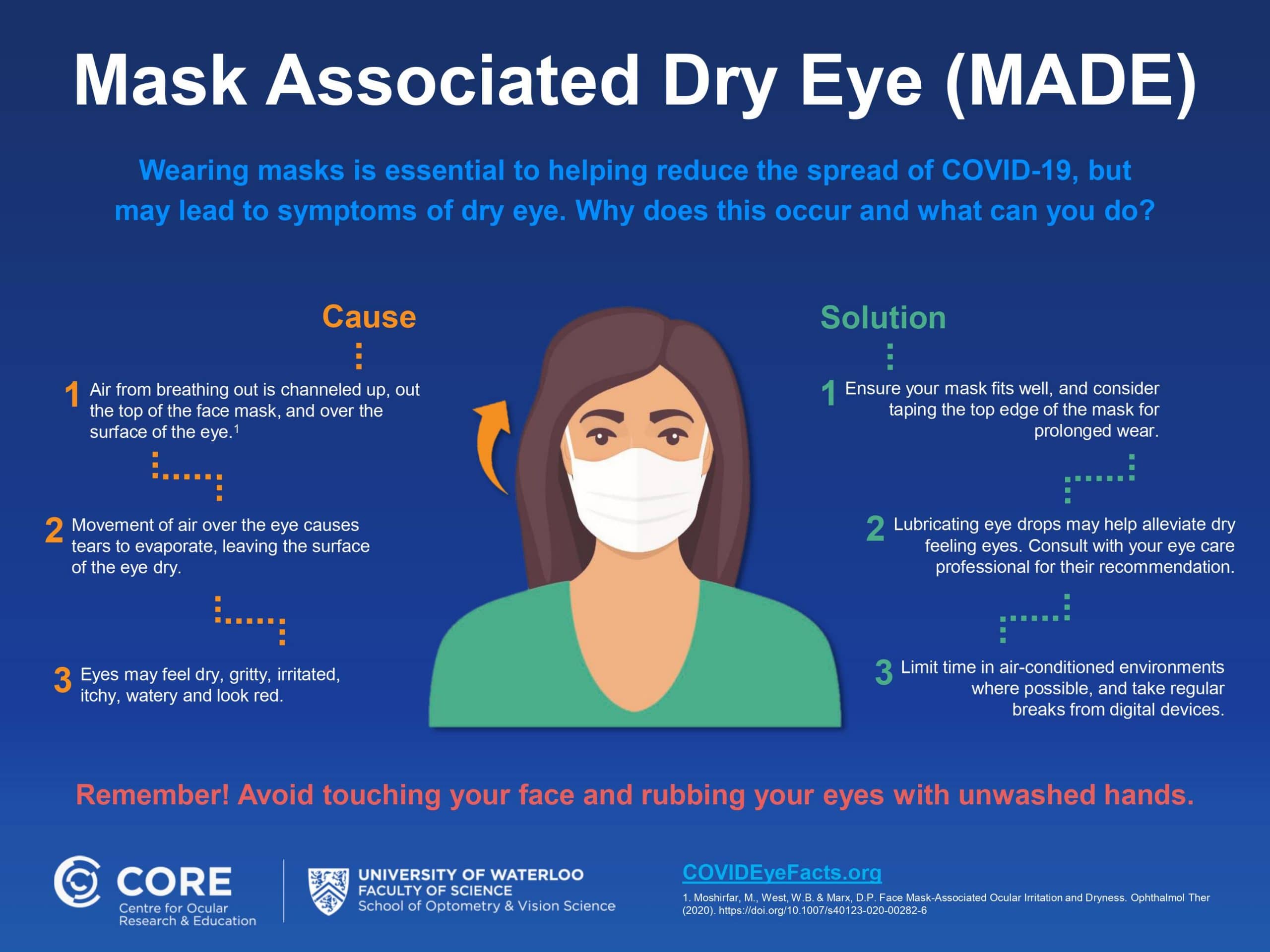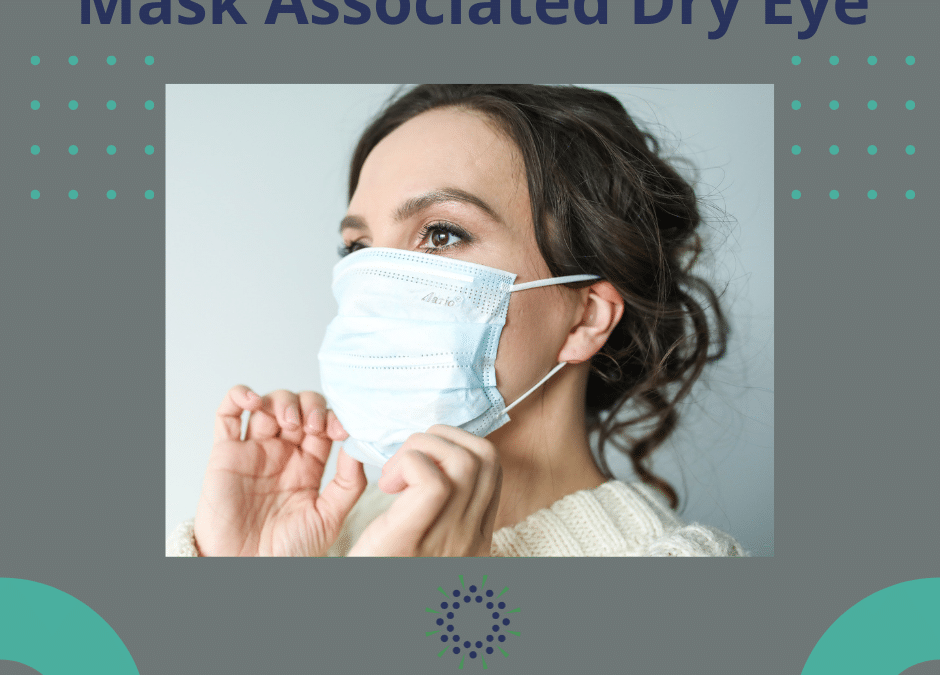Mask Associated Dry Eye
There is a new type of dry eye, that was discovered in 2020 thanks to the COVID-19 pandemic “new normal” with social distancing, hand washing and mask wearing, called MADE (Mask Associated Dry Eye). Masks may be causing dry eye because air from your breath is directed upwards, between your face and the mask and into your eyes. This air can increase evaporation of your surface tears, which may leave your eyes feeling dry, gritty, irritated, stingy or watery and red.
A study that was conducted in 2021 by Krolo et al, found that MADE was more profound in women and in those who already had dry eye symptoms prior to mask wearing. The subjects symptoms were found to be worse if wearing a mask for more than 3 hours per day.
To avoid these symptoms, ensure you are wearing a well fitted mask, this will also help with your glasses fogging up. In some cases, you may need to tape the top of your mask to your face if you’re wearing a mask for a long time. Eye drops may be needed to help rehydrate your eyes. Prolonged screen viewing and airconditioned environments may exacerbate dry eye symptoms, therefore take breaks while looking at a screen.
LINK TO EXTERNAL SOURCE: Optometry Australia



Recent Comments